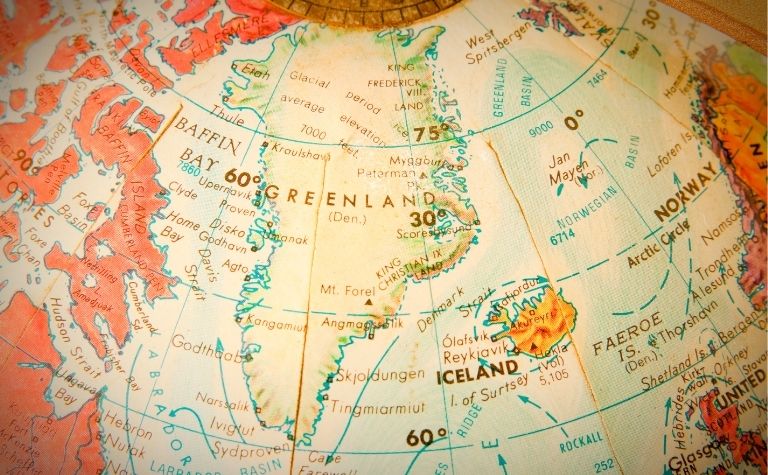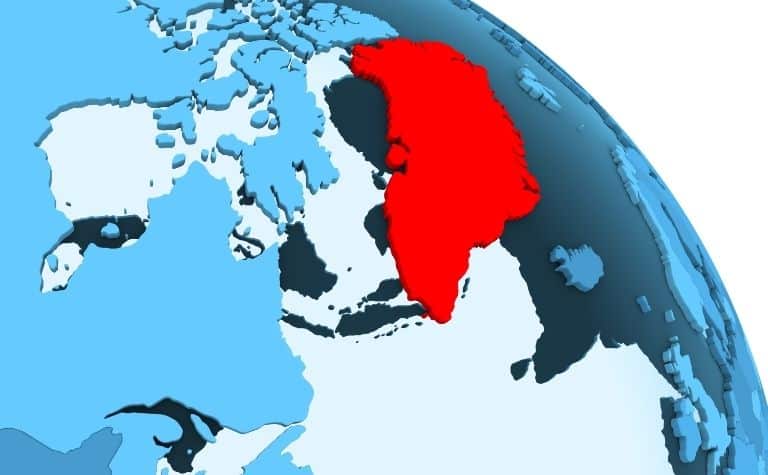It is the world’s largest non-continental island. Still, with a population of just over 57,000 citizens, it is also one of the most desolate and sparsely populated countries in the world.
Although geographically Greenland is part of the North American continent, for all intents and purposes, particularly those of a social, cultural, or political nature, it is very much European, and specifically, Danish.
Although technically it is no longer a colony, Greenland remains a semi-autonomous territory of the Kingdom of Denmark.
There are centuries of close social, cultural, and political ties between these nations, but recent shifts have set the stage for Greenland to become more independent from Denmark.
Greenlanders are fiercely protective of their unique heritage, the bulk of which derives from multiple waves of Inuit settlers.
The balance comes from Greenland’s strong Danish roots, the seeds of which were planted by none other than the Vikings.
Also see The Nordic Race: Meaning and Controversy to learn more.

Why is Greenland Part of Denmark?
Denmark’s ties to Greenland date back many centuries to a period when the Vikings were at the height of their influence and power in Northern Europe.
The Vikings are familiar figures in world history for the roughly two and half centuries during which they laid siege to much of Northern Europe.
They particularly focused on areas of the United Kingdom and France where they established strongholds and even formally ruled.
Aside from their formidable military capabilities, the Vikings were also fearless explorers and skilled navigators without peers.
Thanks to their iconic longboats, Norse explorers sailed incredible distances from their native Scandinavia.
Their seafaring prowess led to the establishment of Viking settlements on faraway shores, including Ireland, the Faroe Islands, and Iceland.
Greenland’s Viking Connection
From Iceland, it was only a matter of time before the Norse transplants set their sights on even more distant lands.
In the spring of the year 982, a Viking of Norwegian descent named Erik Thorvaldsson was forced to set sail from his adopted homeland of Iceland (he had been banished due to a murder conviction).
He pointed his ship toward a new island to the west that he had only heard about from another Icelander.
Over a year later, this Viking explorer, more famously known as Erik the Red, arrived at his destination.
Landing on the western coastline where he was immediately struck by the sight of emerald green meadows, Erik the Red dubbed this new country Greenland.
He hoped that this inviting name would entice droves of settlers to take a leap of faith, make the long journey, and settle in Greenland. [1]
Erik’s son Leif would become a famous explorer in his own right, credited by many scholars and historians with becoming the first person of European descent to set foot on North American soil, centuries before the arrival of Christopher Columbus.
Also, see Is Greenland Part of Scandinavia? to learn more.

The Danish Colonization of Greenland
For roughly five centuries, from the late 900s through the mid-1400s, Norse settlers survived the harsh conditions and sparse resources of Greenland and made this icecap-covered island their home.
But then, for reasons that scholars and historians still debate to this day, these Viking descendants disappeared from Greenland in a rather abrupt fashion.
In the early 18th century, a Christian missionary from Norway named Hans Egede decided to travel.
He made the long journey from Scandinavia to the western settlement in Greenland. His aim was to re-establish contact with the Norse settlers.
By that time, these settlers had not been heard from for hundreds of years.
Upon his arrival, Egede found no trace of his fellow Norsemen but found a somewhat willing audience in the Inuit people. [2]
This initiated a revived interest in Greenland among the Danes, and a robust period of immigration from Denmark to this Arctic destination soon began, marked by the following milestones:
- In 1775, Denmark officially proclaimed Greenland a Danish colony (this proclamation, however, was not formally recognized by international law until the 1930s)
- As part of its purchase of the Danish West Indies islands (which would subsequently be renamed the U.S. Virgin Islands) from Denmark in 1917, the United States formally recognized Denmark’s dominion over Greenland
- Greenlanders found themselves cut off from Denmark during World War II, and this period of isolation and self-rule planted the seeds of autonomy that would sprout in later decades
- In 1953, Greenland formally changed its status from a Danish colony to a province, and more recently, in 1979, home rule (for instance, its own parliament and elected head of state) was established
- A referendum passed by Greenlanders in 2009 set the stage for future initiatives to expand the semi-autonomous independence that Greenland enjoys today [3]
Relations Between Greenland and Denmark Today
Approximately 88% of Greenland’s population are directly descended from Inuit ancestors or have mixed Inuit and Danish lineage.
There is also a significant minority of Greenlanders who are of pure Danish descent.
Thus, the makeup of Greenlanders today is reflective of its unique history where indigenous Arctic and Danish influences converged centuries ago.
Not surprisingly, the official languages spoken in Greenland are:
- Kalaallisut (the native Inuit tongue, which is also referred to as Greenlandic)
- Danish
English is also taught in schools making Greenland a truly cosmopolitan nation. [4]
Relations between Greenland and Denmark can be described as close even though the enactment of Home Rule and Self Government legislation have given Greenland’s internal government greater sovereignty and independence over domestic matters, including:
- Education
- Health
- Environmental and climatic concerns
- Fisheries (a vital industry in Greenland)
As things currently stand, Greenland has its own Parliament with its members duly elected through popular vote and a Prime Minister (head of state) that is elected by those Parliamentary members.
Since it is a part of the Kingdom of Denmark, however, Greenland’s Chief of State is Queen Margrethe II of Denmark, and Denmark exercises sole jurisdiction over the following aspects of Greenland’s governance:
- Foreign affairs and international diplomacy
- National security and defense
- Judicial matters, including penal codes, domestic policing, and courts of law
- Financial matters, including monetary policies (the Danish Kroner – DKK – is the official currency of Greenland)
- Civil matters, including citizenship and family issues [5] [6]
The relationship between Greenland and Denmark is centuries-old and complex.
Its current state may also be best embodied by these two nations’ responses to an incident that put it squarely in the international spotlight, thanks to an American head of state.
Greenland is Not For Sale
In 2019, then-President Donald Trump made international headlines and caused considerable ire when he expressed a desire to purchase Greenland from Denmark.
Whether his words were mere conjecture, politically-motivated posturing, or genuine intent is unclear.
These comments caused an uproar in Greenlandic and Danish circles.
They also placed the relationship between these two countries under a microscope.
Through their separate responses, Greenlandic and Danish leaders addressed a suggestion.
The suggestion implied that in the modern era, one nation could be influenced by financial gain to sell a semi-autonomous territory.
Both leaders reaffirmed a mutual stance. Regardless of the price or the buyer’s stature, Greenland is not for sale. Furthermore, Greenland is not even Denmark’s to sell.
Greenland’s Prime Minister Kim Kielsen responded to President Trump’s comments by declaring that Greenland was not for sale in no uncertain terms.
Even if it were, the bidding would need to be directed to Greenland and not Denmark.
A similar sentiment was expressed by Prime Minister Mette Fredericksen of Denmark, who succinctly stated, “Greenland is not Danish. Greenland is Greenlandic.” [7] [8]
Conclusion
Greenland has been one of the most sparsely populated countries throughout its existence but has a rich history dating back to the Viking Age.
And perhaps it is the strong-minded independence of their Norse forefathers and their Inuit ancestors’ indomitable spirit that will pave the way for modern Greenlanders.
References:
[1] Source
[2] Source
[3] Source
[4] Source
[5] Source
[6] Source
[7] Source
[8] Source
